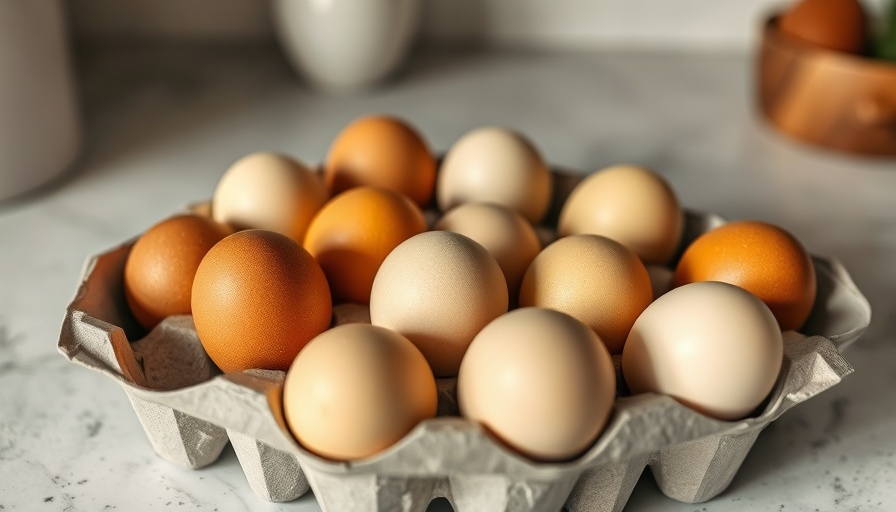
Embracing Tradition with a Natural Twist
Dyeing Easter eggs is a cherished tradition for many families. However, in today’s world, where concerns about artificial ingredients are rising, parents are actively seeking healthier, more natural alternatives for festive celebrations. This year, consider infusing your Easter celebrations with wholesome practices by opting for naturally dyed eggs. Not only does it create a beautiful display, but it also promotes sustainable habits that contribute to a healthier lifestyle for your family.
Why Choose Natural Egg Dyes?
The recent scrutiny of synthetic dyes, many of which have been linked to various health concerns, has prompted a significant shift towards natural solutions. With the FDA banning certain harmful dyes but allowing others in food products, the question arises: why risk exposing children to potentially harmful substances, even if they're just decorating eggs? Opting for natural dyes not only gives eggs a vibrant appearance but also minimizes health risks.
How to Naturally Dye Your Easter Eggs
There are two primary methods to dye eggs naturally: using store-bought natural dyes or creating your own using fruits, vegetables, and herbs.
- Store-bought Natural Egg Dye: For a quick and straightforward method, mix 1 tsp of store-bought natural food coloring with 2 tablespoons each of white vinegar and water. Soak your eggs in this dye bath until you achieve the desired color.
- Natural Dye from Fruits and Veggies: If you prefer a DIY approach, you can use common kitchen ingredients. Here’s a quick guide to colors and their sources:
- Blue: Use a cup of boiled purple cabbage.
- Purple: Boil with a cup of blueberries for a rich hue.
- Brown: Onion skins result in a warm, golden brown; spinach leaves produce a yellowish brown.
- Green: A tablespoon of spirulina added while boiling gives a fresh green tint.
Creating Lasting Memories Through Natural Activities
Engaging in activities like dyeing eggs should be a joyful family bonding experience. In addition to promoting healthier choices, using natural dyes also provides an excellent opportunity to teach children about the benefits of using natural ingredients. This can significantly alter their perspective on food and consumption, laying the groundwork for a more health-conscious mindset.
Counterarguments: A Healthy Debate
While the joys of Easter celebrations often involve indulging in sweet treats, it’s essential to address the other side of the coin. Some argue that occasional treats during celebrations are fine, and that traditions shouldn’t have to change. While it’s true to allow for indulgence, especially during holidays, it’s also vital to create a balance. Too much emphasis on unhealthy foods during celebrations can inadvertently shape children’s expectations about fun and food, making them equate enjoyment solely with sweets.
Inspiring Healthier Celebrations Moving Forward
By advocating for naturally dyed Easter eggs, you're not only protecting your loved ones from harmful substances but also setting a positive example in your community. Sharing this approach can inspire other families to follow suit, contributing to a broader movement towards healthier, more mindful living.
Take Action This Easter!
This Easter, why not gather your loved ones, roll up your sleeves, and create beautiful, naturally dyed eggs? Try to incorporate at least one new dyeing method, whether it’s from fruits, vegetables, or store-bought options. By fostering these healthy and sustainable habits, you're paving the way for a richer tradition for generations to come.
Remember, every little change counts! Join fellow parents in sharing your experiences and brightening your family celebrations with vibrantly dyed eggs that everyone can feel good about.
 Add Row
Add Row  Add
Add 




Write A Comment